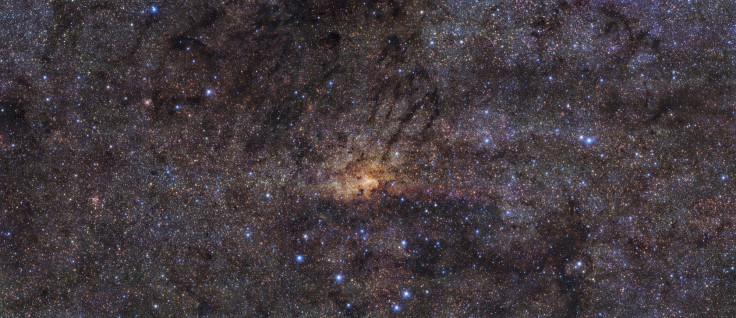Stunning Image Of Milky Way's Galactic Center Reveals Intense Ancient Star Burst

KEY POINTS
- The HAWK-I instrument on the ESO's Very Large Telescope captured a stunning image of the Milky Way's Galactic Center
- The images suggest that the Milky Way experienced an intense star burst some time in its star formation history
- The star bust led to over 100,000 supernovas
- Researchers say the event may be one of the most energetic events in the Milky Way's history
- The study results run contrary to currently accepted paradigms of star formation in the Milky Way
Thanks to the European Southern Observatory's (ESO) Very Large Telescope (VLT) in the Chilean Atacama Desert, astronomers have uncovered new details about the history of star formation in the Milky Way. The high-resolution image of the Milky Way's galactic center revealed star bursts so intense that they led to over 100,000 supernovas.
Galactic Center
Researchers of a new study published in Nature Astronomy were able to capture incredibly detailed images of the Milky Way's galactic center thanks so an instrument on the VLT called HAWK-I, a wide-field imager that lets it see through dense interstellar gas and dust, thereby allowing it to see stars in the galaxy center that would otherwise be hidden.
The image has an angular resolution of 0.2 arcseconds, meaning that it can be comparable to seeing a soccer ball in Zurich from Munich.
Star Formation
Using these stunning images, the researchers found that about 80 percent of the stars at the central region of the Milky way were formed early in its history, between 8 and 13.5 billion years ago. This period of star formation was then followed by 6 billion quieter years in which only a few stars were born.
This period of quiet ended about a billion years ago when an intense burst of new star formation created new stars with a combined mass of tens of millions of suns in the central region of the Milky Way over a period of less than 100 million years.
In fact, the researchers say that this period of star formation was so intense that it resulted in over a hundred million supernova explosions. This is because many massive stars are created during such star bursts. And because the life-spans of massive stars are much shorter than that stars with lower masses, they reach the end of their lives faster in violent supernova explosions.
According to researchers, this star burst event may arguably be one of the most energetic events in the history of the Milky Way, and it runs contrary to the currently accepted belief that star formation in the Milky Way has been continuous.
“The conditions in the studied region during this burst of activity must have resembled those in 'starburst' galaxies, which form stars at rates of more than 100 solar masses per year,” study lead Francisco Nogueras-Lara of the Max Planck Institute of Astronomy said. "Contrary to what had been accepted up to now, we found that the formation of stars has not been continuous."
At present, the star forming rate of the Milky Way is at one or two solar masses per year.
“Our unprecedented survey of a large part of the Galactic centre has given us detailed insights into the formation process of stars in this region of the Milky Way,” observation lead Rainer Schödel of the Institute of Astrophysics of Andalusia in Granada, Spain said.
© Copyright IBTimes 2024. All rights reserved.






















